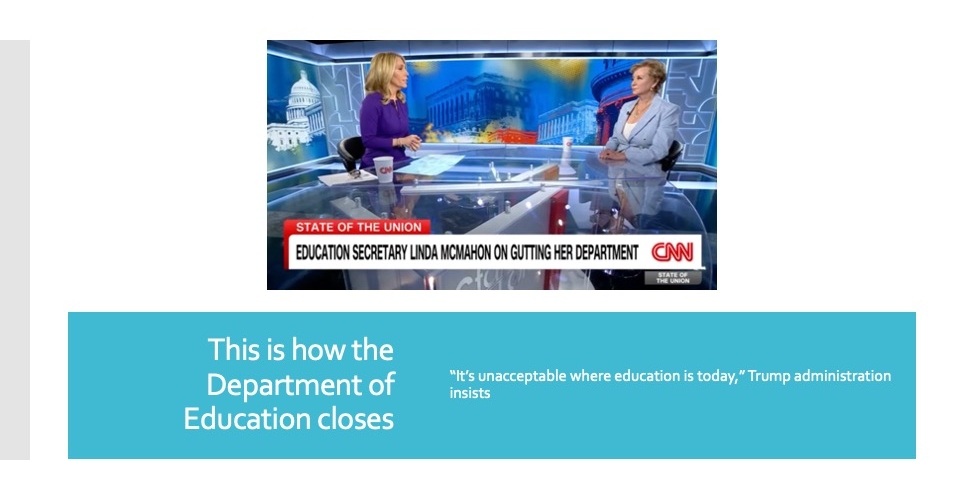Ensuring that every student receives an equitable education requires more than rigorous academics—it necessitates clear and accessible communication between schools and families.
Language barriers can significantly hinder academic success, parental involvement and overall student well-being for the more than five million English language learners in U.S. public schools. School districts that invest in professional interpreters create more inclusive environments, improve student and teacher performance, foster stronger family engagement and create more prosperous communities.
Growing need for language support
According to the National Center for Education Statistics, ELL students constitute approximately 10% of the public school population, reaching over 20% in some states.
Many of these students come from households where English is not spoken fluently, making it challenging for parents to engage with educators, understand school policies and support their child’s learning journey. ELL students may struggle academically, experience lower attendance rates and feel disconnected from their school community without proper language support.
Professional interpreters are pivotal in bridging these communication gaps by ensuring parents can actively participate in their child’s education. Research from the Migration Policy Institute highlights that parental engagement significantly increases when schools provide professional interpreters, leading to better student outcomes.
Academic benefits of professional interpreters
Multiple studies have shown that ELL students perform better academically when their families have access to professional interpreters. A study published by the Regional Educational Laboratory found that ELL students whose parents regularly attended school meetings and communicated with teachers performed significantly better on standardized tests.
In districts that have invested in interpreter services, students have demonstrated:
- Higher test scores: Schools providing consistent interpretation services saw ELL students improve their reading and math scores compared to those without such support.
- Better attendance rates: When parents effectively communicate with school officials, chronic absenteeism among ELL students drops.
- Greater classroom engagement: Students whose parents are informed and involved tend to feel more confident in the classroom, participate more, and show a stronger sense of belonging.
Our own work with school districts in Georgia, Delaware and Maryland confirms these findings. Specifically, we provide interpretation services for parent-teacher conferences through state and county contracts. We have supported parent-teacher conferences in a variety of languages, including Spanish, Mandarin, Amharic, Korea, and Arabic.
Consequences of relying on untrained interpreters
Despite the clear benefits of professional interpretation services, many school districts still rely on untrained bilingual staff, students or even family members to interpret crucial educational information. This practice often leads to miscommunication, confidentiality issues and incomplete or inaccurate translations.
The American Translators Association reported in 2021 that 60% of school districts surveyed had used students or non-professional staff for interpretation at least once in the previous year. While well-intentioned, this approach can result in significant errors—such as mistranslating IEP meetings, disciplinary actions or medical concerns—potentially putting students at risk.
When parents can communicate effectively, they are more likely to attend school events, parent-teacher conferences and workshops. Professional interpreters help create a welcoming environment that encourages parental involvement.
We have seen that school districts that invest in professional interpreters often see increased parent participation at school events and improved trust between families and educators. Additionally, digital platforms now allow for real-time interpretation during virtual meetings, further breaking down barriers for families who cannot attend in person.
Services that provide over-the-phone interpretation have enabled districts to offer interpretation on demand, ensuring that families always have access to critical information, no matter the setting.
Policy implications and moving forward
The U.S. Department of Education’s Office for Civil Rights has emphasized that schools have a legal obligation under Title VI of the Civil Rights Act to provide meaningful language access for non-English-speaking families. Schools that fail to deliver these services risk educational disparities and potential legal ramifications.
To address these challenges, school administrators should consider the following steps:
- Invest in professional interpreter services: Partnering with professional interpretation providers ensures accuracy, compliance, and equitable access for all families.
- Train staff on language access policies: Teachers and administrators should understand the importance of using professional interpreters rather than relying on students or untrained staff.
- Expand digital and on-demand interpretation services: Leveraging technology to provide real-time access to interpretation can help bridge communication gaps more efficiently.
- Engage with ELL communities: Schools should actively seek feedback from ELL families to assess their needs and improve language access initiatives.
Creating success
The evidence is clear: Providing professional interpreters in schools improves academic performance, increases attendance and strengthens family engagement among ELL students. Investing in language access is not just about compliance; it’s about creating success for students, teachers school districts, and the communities districts serve.
Perhaps most importantly, it ensures that every student has the opportunity to succeed. By prioritizing professional interpretation services, school districts can create environments where language is no longer a barrier but a bridge to success for students and their families.



